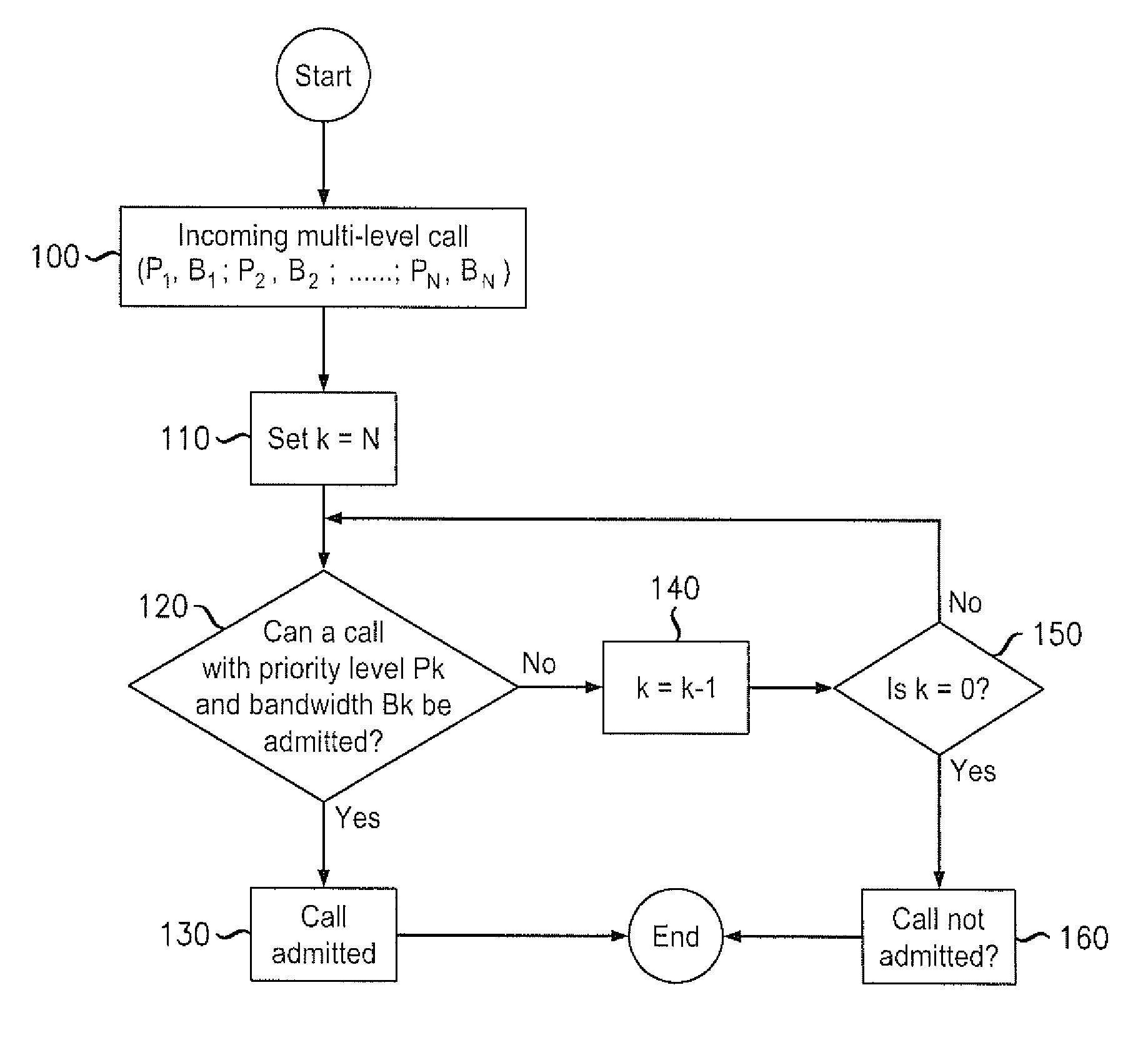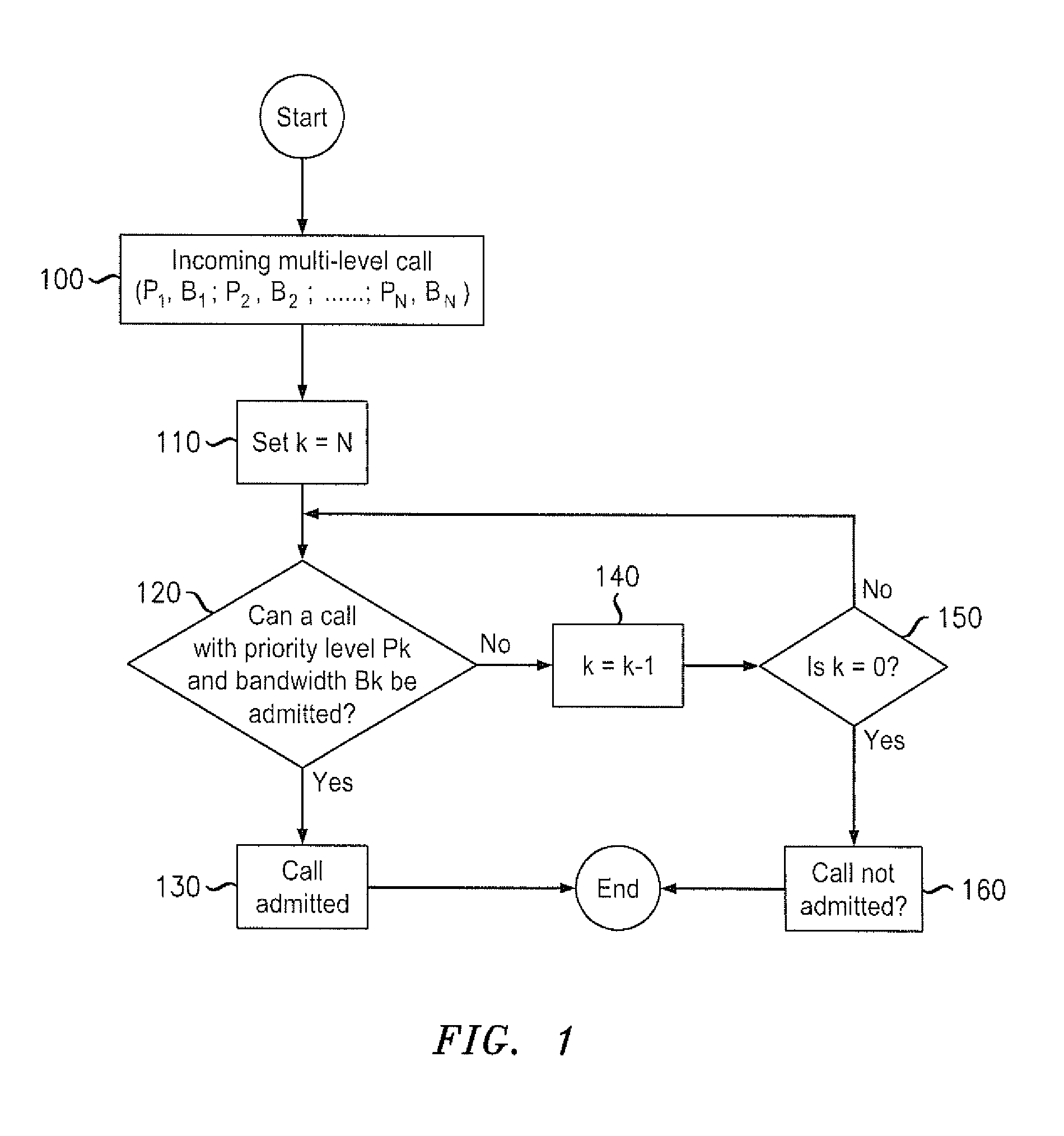Call admission and preemption for multiple bit-rate applications
a call admission and application technology, applied in the field of packet switching communication networks, can solve the problem of not being efficient to preempt an entire call, and achieve the effect of freeing up bandwidth and enough resources
- Summary
- Abstract
- Description
- Claims
- Application Information
AI Technical Summary
Benefits of technology
Problems solved by technology
Method used
Image
Examples
example
[0059]The following example illustrates an embodiment of a call admission process of multiple bit-rate calls. Multiple bit-rate call 1 has 4 levels with the following characteristics: (P1, 2 Mbps; P2, 4 Mbps; P3, 6 Mbps; P4, 8 Mbps). Assume the capacity of the link is 10 Mbps. Assume that the system has no other calls when call 1 arrives. Call 1 is then admitted at level 4 because at level 4, the call requires 8 Mbps and the system has 10 Mbps. After admission, call 1 has 4 components (C1, C2, C3, C4), each having 2 Mbps of bandwidth.
[0060]Assume that a second multiple bit-rate call, call 2, arrives, with identical characteristics as call 1. The admission control process at eNodeB would be as follows:[0061]First, the call admission process evaluates call 2 at level 4, the lowest level of call 2. At level 4, call 2 requires 8 Mbps, but the system currently only has 2 Mbps not in use. Therefore, the call can not be admitted without preemption. However, Call 2 being of priority P4 can ...
PUM
 Login to View More
Login to View More Abstract
Description
Claims
Application Information
 Login to View More
Login to View More - R&D
- Intellectual Property
- Life Sciences
- Materials
- Tech Scout
- Unparalleled Data Quality
- Higher Quality Content
- 60% Fewer Hallucinations
Browse by: Latest US Patents, China's latest patents, Technical Efficacy Thesaurus, Application Domain, Technology Topic, Popular Technical Reports.
© 2025 PatSnap. All rights reserved.Legal|Privacy policy|Modern Slavery Act Transparency Statement|Sitemap|About US| Contact US: help@patsnap.com



